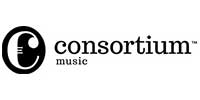I’ve just spent a delightful month at the National Library of Australia as a 2024 Creative Arts Fellow. I’ve read legendary musician Miriam Hyde’s intimate letters, diaries, journals, poems and media reviews, focussing on 1932-36 when she was the South Australia Elder Overseas Scholar at the Royal College of Music, London. It is my great honour to have been the final Creative Arts Fellow generously supported by Friends of the National Library of Australia.
Now an Australian musical icon through her later decades of examining, publishing educational piano music, teaching at Kambala School, Hyde’s 166 early letters sent from London to her home in Adelaide were the starting point for my research. Breathless, filled with detail and illustrations, up to 45 pages each, they are witty, insightful and enthusiastic. She’s writing on the fly, often artistically inspiring and full of creation. These have been digitised so everyone can read them online, and it’s worth it! The way this young South Australian Scholar, queueing for tickets for all her superstar piano heroes, so quickly took London by storm herself, continues on from a previous century of “Lizst-mania” and other pianists’ superstar status.
(She actually spoke to him and even shook Rachmaninoff’s hand! ‘Thrilling!!’)
Strongly encouraged by the likes of Arthur Benjamin, Vaughan Williams, Sir Henry Wood, Sir Malcolm Sargent and Constant Lambert; this student was destined for piano stardom. RCM programmed her in both of her own piano Concerti with professional orchestras (LPO, LSO, BBCSO) and bought advertising on front pages of major newspapers.
Throughout, it’s clear to see how her stunning memory and pitch recall is driven by her lifetime experience of synesthesia: the involuntary linking of sound, colour and emotion. I was interested because I experience that too.
Miriam consistently demonstrates the speed of thinking and trance-like passionate states that synesthesia (neurodiversity) produces. She took amazing photographs, counted blades of grass, her walking paces on board SS Corfu, dentist’s drill revolutions and produced perspective and architectural, botanic drawings that would probably have fascinated Oliver Sacks. Everything is dated, illustrated and annotated. She wrote incessantly, often copying music parts for (and after) hours. And luckily for us and the National Library of Australia, she catalogued her oeuvre obsessively.
Thanks also to Miriam’s librarian daughter Christine, I also have private photographs, manuscripts, drawings, journals, reports, letters and original scores, in addition to those stored in Canberra. Miriam and Christine are both synesthetic: seeing and associating involuntary, unique, coloured responses to hearing. Scientifically this is associated with very fast mental processing via specially connected neural pathways and with a uniquely rich experience of the world through multiple senses. It explains how Miriam memorised and extemporised so easily. In private scrapbooks, Christine showed me a list of keys, their colours and emotions, which Miriam had written out in documenting her experience.
Throughout this chance to delve into the innermost thoughts of a fellow synesthete, I’ve also looked at latest research on neurodiversity. Fascinating!
“No two synesthetes will ever perceive the same thing … even if they are both the same type of synesthete … the synesthetic experience of the world is more intense than that of non synesthetes … a synesthete’s perception constitutes a gift in and of itself. It is a kind of giftedness which bestows upon the synesthete uncommon mental powers…”
The Synesthete: “A New Type of Gifted Student..” Cawley, V. International Conference on learner diversity 2010, Kuala Lumpur, Malaysia
I already know how the synesthestic experience of the world is brilliant but also intense. Loud noises, flashing lights, very acerbic sounds or compositions create sensory overload for many neurodiverse people. Plus, most successful artists have hyperactive tendencies towards practice. So, like an elite sportsperson, Miriam was consistently obsessed, focussed and driven. Practising every day up to 8 hours, she was constantly learning, adapting, fitting in, managing finances, composing, constantly learning new techniques and with this her brain was expanding: quite soon, she notes how she can learn things ‘quicker than before’ by using mindful practice on her journey by train.
In addition to practicing, rehearsing, composing and copying, Miriam was going to as many concerts as she could, describing rapturous first hand experiences in ‘our own little planet’- The Royal Albert Hall. Meeting Rachmaninoff, Paderewski, seeing Stravinsky, Piatagorski, Rubinstein, Horowitz, Elizabeth Schumann, teenage Yehudi Menuhin with Edward Elgar in his last public appearance: she was at the heart of artistic London, and soon, was performing herself, with the interested engagement of Vaughan Williams and his RCM staff. This all helped me understand her much quoted ‘nervous collapse’ – when her mother Muriel travelled to London from Adelaide. She had worked so hard! I have been in similar situations myself.
Music was also her relaxation: anxiety vanished, while composing and performing almost in a trance, she was able to achieve astonishing technical feats deeply affecting her audiences. Her handwritten scores were called works of art. But she also knew overwork, sensory overload, worry and she has a lot to inform us on mental health in this age of anxiety.
After the kind support by Friends of National Library, I really want to share Miriam’s story, also to look at her story from other points of view; to cross reference with other musical and historic letters, minutes, books and newspaper archives. It’s fascinating but also so sad that this exceptional South Australian woman’s talents are so hidden.
I will start by researching and making a short documentary about this exceptional female artist. Her story is fascinating, relevant, funny, and should be more widely known: Miss Fischer vibes combined with romantic, Edwardian and wartime nostalgia, and a great soundtrack built in! You can find out more on my website.
Ultimately, however, as well as to recalibrate Miriam’s legacy, I’m interested in her colourful story as a way to advance greater awareness, understanding and discussion of neurodiversity and mental health issues and giftedness in our society. You can help me make this fascinating story better known with a tax deductible donation, via the Australian Cultural Fund.





